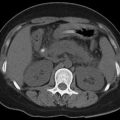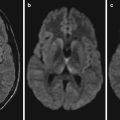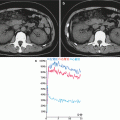© Springer Science+Business Media Dordrecht and People’s Medical Publishing House 2015
Hongjun Li (ed.)Radiology of Infectious Diseases: Volume 110.1007/978-94-017-9882-2_22. Ultrasonography
(1)
CT Department, The Second Affiliated Hospital, Harbin Medical University, Harbin, Heilongjiang, China
(2)
Department of Radiology, Beijing Shijitan Hospital, Capital Medical University, Beijing, China
Ultrasonography is a diagnostic examination based on the physical properties of ultrasound and acoustic differences between human organs and tissues to demonstrate and record in the forms of waves, curves, or images. Ultrasonography has progressed from traditional ultrasound planar imaging to real-time imaging and three-dimensional imaging.
2.1 Procedure of Ultrasonography
Ultrasonography is commonly performed on supine human body. However, lateral position and other body positions are also ordered for the examination. Patients may also be ordered to change their positions during the procedure. The sectional examinations can be performed along transverse, longitudinal, or oblique direction.
Patients are commonly ordered to take a proper position and expose the skin of the target area. Couplant is then applied to expel air between the probe and skin. The probe is placed closely to the skin for scanning and the harvested images are monitored. If necessary, the probe can be stopped, namely, freeze frame, for detailed observation. Records should be well kept, with images recorded or videotaped.
The currently common procedures of ultrasonography include:
1.
A-mode ultrasound
Principally the amplitude, quantity, and sequence of waves shown on the oscilloscope screen are used to confirm the presence of lesions. This mode is applied for diagnosis of cerebral hematoma, brain tumor, cyst, hydrothorax and ascites, hepatosplenomegaly, and hydronephrosis.
2.
B-mode ultrasound
The images can clearly demonstrate minor lesions. Various sections of organs can be observed. It can produce early diagnosis for numerous diseases in the liver, spleen, gallbladder, pancreas, kidney, and urinary bladder.
3.
M-mode ultrasound
Electrocardiography is usually incorporated into M-mode ultrasound to diagnose various heart diseases, such as rheumatic valvular disease, pericardial effusion, cardiomyopathy, and intra-atrial myxoma. Its combination with electrocardiography is also applied to assess cardiac functions as well as preoperational diagnosis and postoperational follow-ups of various congenital heart diseases.
4.




Sector scanning
Sector scanning is capable of demonstrating various sections of the heart to visualize the real manifestations of cardiac diastole and systole. Therefore, this mode of ultrasonography is superior to M-mode in validity and reliability. In addition, sector scanning can be applied for diagnosis of a wider range of diseases. In addition to heart diseases, the diagnosis of hepatic, gallbladder, pancreatic, and craniocerebral diseases can be defined.
Stay updated, free articles. Join our Telegram channel

Full access? Get Clinical Tree






